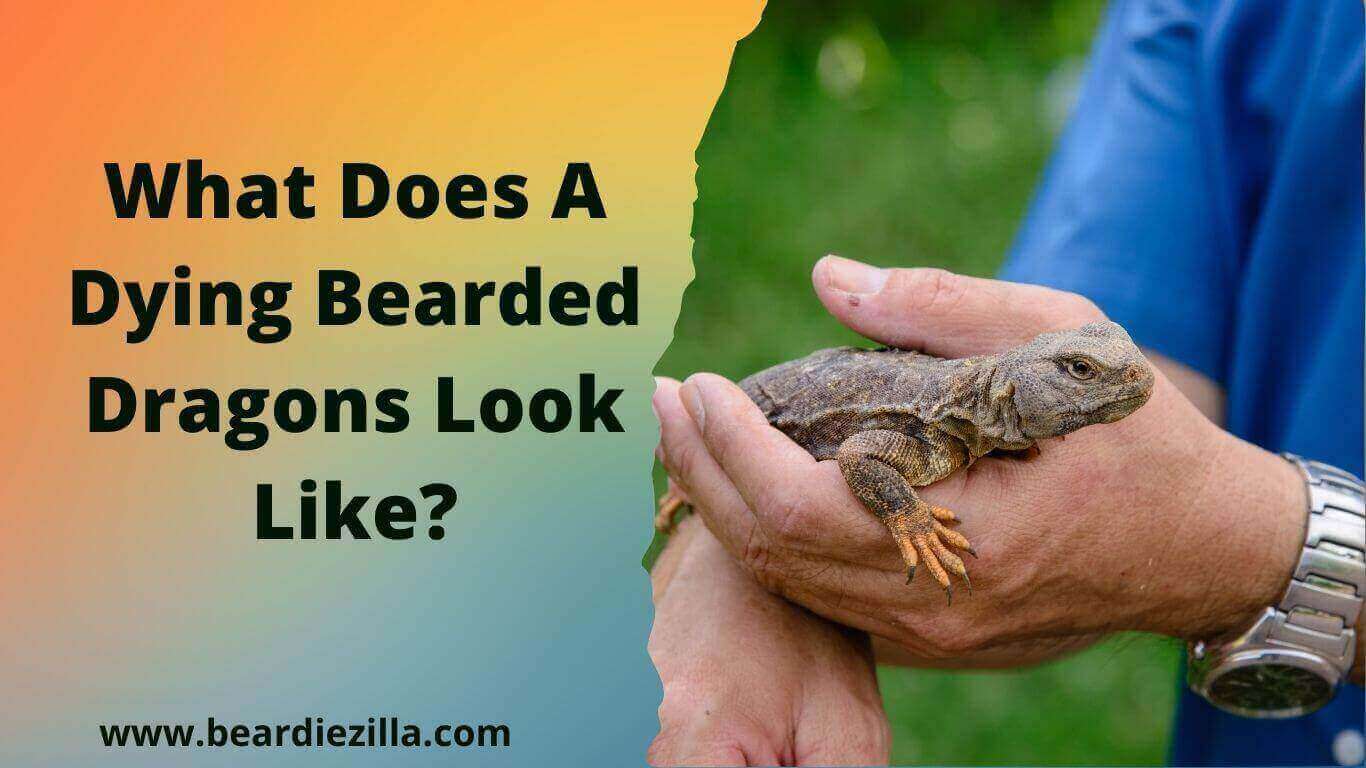
Keeping a pet bearded dragon is a wonderful experience for anyone, but this doesn’t come without its fair share of responsibility. Owning any animal means that you’ll be responsible for their well-being and care on a daily basis, so it’s important that you are ready from the word go.
Keeping your pet happy and healthy is paramount to ensure they live a long and happy life; something which can unfortunately not be guaranteed. So, what does a dying bearded dragon look like? If your pet begins to exhibit abnormal behaviour or strange eating habits, it may be indicative of something more serious.
Reptiles are generally very resilient animals and have the ability to hide signs of illness in order to protect themselves from predators. This article will explain some of the key indicators that may mean your bearded dragon is beginning to struggle with illness and disease.
Constantly hiding
their head Many bearded dragons will start to experience a lack of appetite as they age. They may also become more lethargic and stop moving around their enclosure.
This can be caused by a number of different illnesses, but it is most often seen with parasitic infections or fungal infections. As your pet’s health declines, they will begin to hide in the one place you won’t find them – their head.
This can signal that your dragon has ingested some type of object which could possibly be harmful.
Not eating
and acting lethargic If your pet is not eating, and they are behaving less like the energetic creatures they usually are, this could be a sign that they’re struggling with disease.
Bearded dragons that aren’t eating normally are more likely to be anemic or have parasites. It can also mean that your dragon has a parasitic infection, which can be treated with medication from a veterinarian.
If your pet is acting lethargic as well, it may mean that they have a metabolic bone disease. This condition is caused by too much calcium intake and will generally cause the jaw muscles to weaken.
Swelling in the jaw area
One of the first signs that your bearded dragon is in distress is if their jaw appears swollen. This can be from a myriad of causes, including an infection or injury.
Excessive drooling
Drooling is one of the most common symptoms which can indicate that your bearded dragon is unwell. Bearded dragons are known to be a rather vocal species and will often vocalise if they are feeling uncomfortable.
This could be an indication that they are too hot or too cold, which can lead to excessive drooling. If your bearded dragon starts to drool more than normal, it’s important you keep a close eye on them.
Difficulty breathing
If your beardie is struggling to breathe, it could be a symptom of an illness. When they are breathing heavily, this can indicate that they are experiencing respiratory distress. This is a serious condition which requires immediate treatment and should not be ignored.
In Summary
Dying bearded dragons are in need of immediate medical attention.
- Are you supposed to clip a bearded dragon’s nails? - October 21, 2022
- What do you do when you first get a bearded dragon? - October 21, 2022
- What is the best vegetable for bearded dragons? - October 21, 2022
